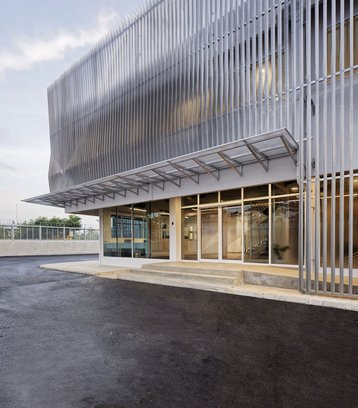There’s a huge surge of growth in Asia that we are not seeing in the rest of the world, according to Nick Stavroulakis. The CTO at SpaceDC pointed to the explosion in digital demand and the proliferation of smartphones in the region. And as cutting-edge 5G networks come online, he expects it to further fuel data center demand in places such as Indonesia.
SpaceDC is no stranger to Indonesia. Last month, the Singapore-based firm launched the 1.45MW JAK2, its first data center at Jakarta Barat, Indonesia. Construction for the adjacent 24MW JAK1 facility with expected completion by 2021, and which will eventually bring an additional 24MW of capacity online.
A fast-changing landscape
One area that the design of data centers in the region has evolved would be in their power density, says Stavroulakis. Part of this can be attributed to the meteoric rise in demand for cloud services, which now sees hyperscaler customers asking for anything between 8KW and 20KW per rack, up from just 2KW to 4KW per rack a few short years ago.
As we reported last year, cloud giants such as Alibaba Cloud, AWS, Google Cloud, and Microsoft have turned their collective attention towards establishing multi-zone cloud facilities in the fourth most populous country in the world. Considering that many organizations are still running self-operated data centers in the country, the result is a sharp increase in demand for reliable, high-density data centers.
For SpaceDC, meeting this demand calls for new ways of constructing data centers faster but without sacrificing quality. Stavroulakis said: “We look at prefabricating things, containerizing Uninterruptible Power Supply (UPS) and other building elements. We do all these things to build up the data center quicker and to improve its quality. If we can build something in the factory, then the quality is better, there is less waste, and it is quicker.”
Starting with a higher standard
When it came to compliance with standards and regulations, SpaceDC decided to go further. “We put in the extra effort to be compliant with international standards; we comply with both local and international standards. It gives people comfort that what they are walking into is an international quality they are used to,” said Stavroulakis.
Intent to establish a new standard for data center, Stavroulakis says the team focused on the quality of materials used and a flexible design that is customizable to address customer requirements. This means beginning with relatively rudimentary decisions such as the cabling used or how water is stored, treated, and filtered before use, to complex ones such as selecting the right fire suppression system.
After extensive research, the team also decided not to deploy an air-side economizer given the year-round hot and humid weather in Jakarta. Instead, SpaceDC went with high-efficiency air-cooled chillers for JAK2 and increased the chiller water temperature for the best possible energy outcome for the environment.
Stavroulakis says this design decision didn’t come at the expense of reliability. Because the installed chillers can restart quickly for uninterrupted cooling, there was no need for huge buffer tanks of coolant. And within data halls, a fan wall system was chosen for its ease of maintenance, better security, and better efficiency due to the larger heat exchange coil.
A focus on operations
When designing a data center, it is vital to keep the operational perspective in mind, says Stavroulakis. This calls for properly integrated systems that are also intuitive to operate. “Data centers can get overly complicated. People go: ‘What if this situation happen or other error happens at the same time?’ From a design and operational perspective, they go down the rabbit hole. We want resilience that is less complicated.”
“The less complicated [the system is], the fewer things that can go wrong. It’s about coming up with elemental designs and solutions rather than overly complicated solutions. Know the operational strategy and making sure design and operational is as straightforward as we can make it,” said Stavroulakis.
Working hand in hand with suppliers is a crucial aspect of operational excellence, too. “We’ve worked closely with MTU Onsite Energy for JAK2. When we need them, their technical experts from Singapore and Germany can connect remotely to diagnose any problems.”
Finally, excellence in operations cannot take place without the right personnel: “We’ve spent a lot of time finding and hiring a really good operations team. It’s making sure we’ve got a team with the international expertise and local knowledge to keep our facilities running at the highest standards. This calls for an understanding of how things in Indonesia works, and how to work with people and manage things.”
Going green
Stavroulakis agrees that that environmental awareness is growing rapidly, with a focus on establishing greater energy efficiency, integrating renewables into data centers, and energy storage and redistribution. For now, SpaceDC is focused on efficient systems, and offering resilient capacity without excessive redundancy.
“We’ve got a good middle ground. We are not using technology that is brand new or unproven or untested... we use tried and tested technologies, and implement them in a different way, to reduce our carbon footprint. We push the boundaries, but not too far. We are still being safe and sensible; we are being smart about it.”
Pointing to various environmental pledges by tech giants such as Microsoft’s promise to be carbon negative by 2030 and Google’s pledge to be 24x7 carbon-free by 2030, Stavroulakis summed up: “It’s been a good year for the environment.”





